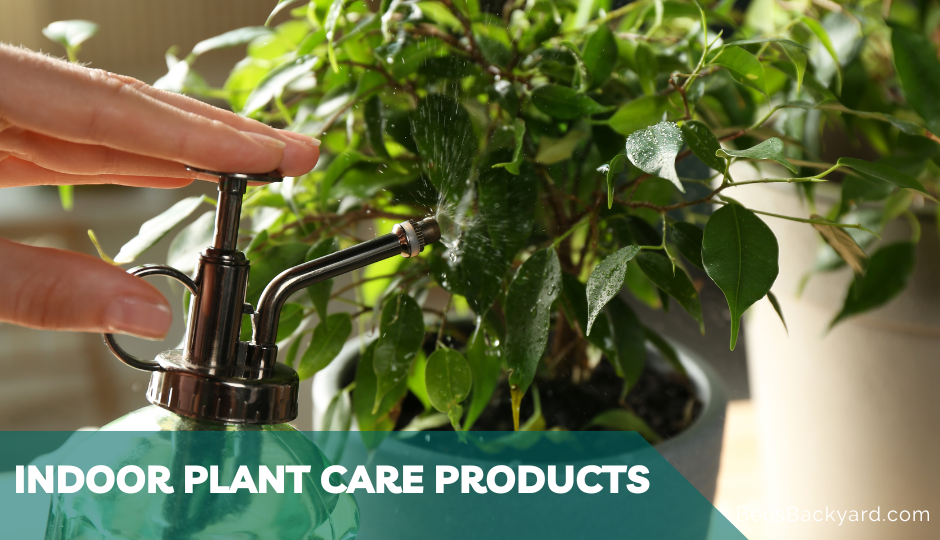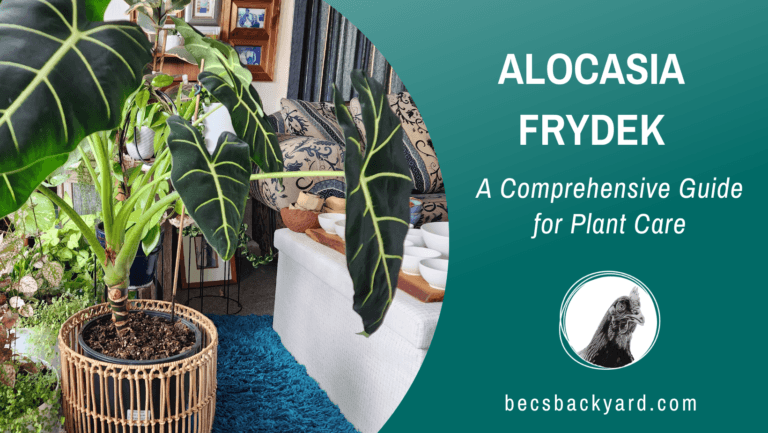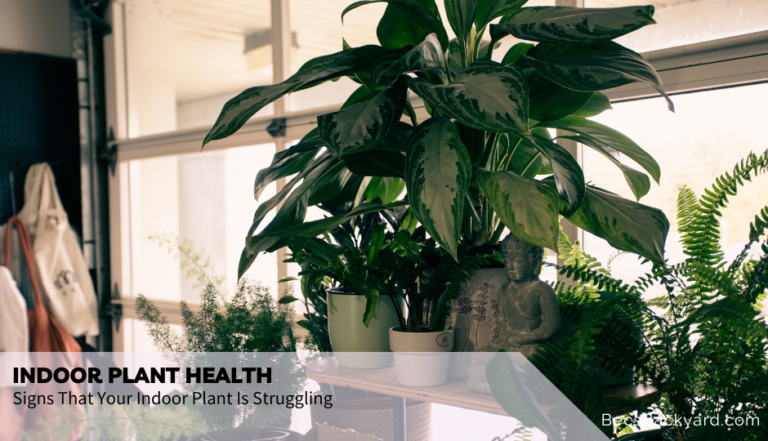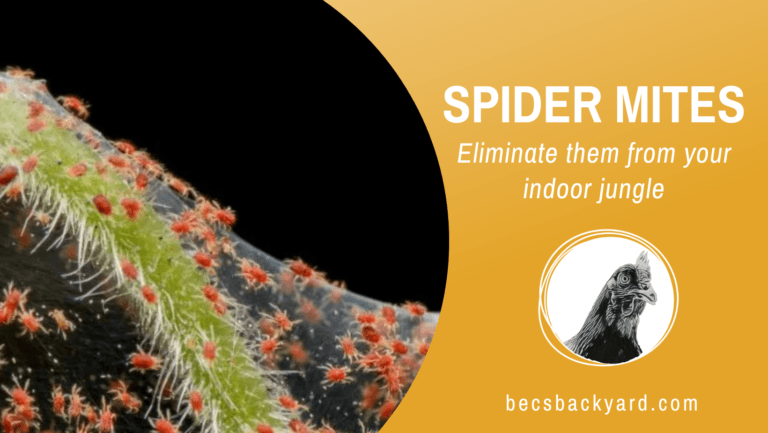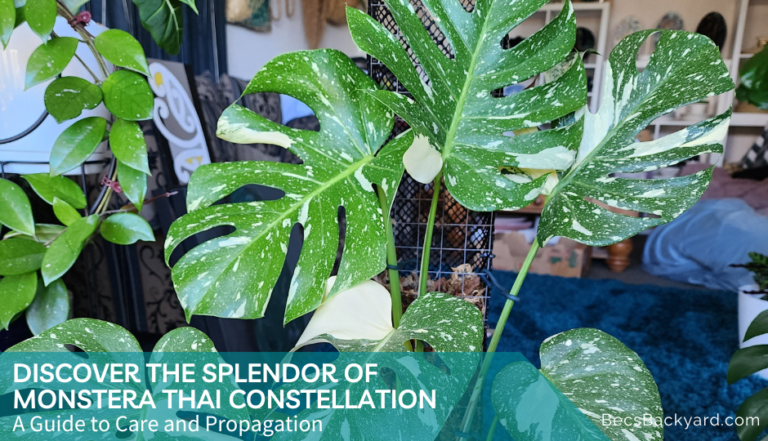Black Velvet Alocasia Care Guide
Welcome to the lush world of Black Velvet Alocasia! This stunning plant, with its dark and velvety foliage, is a captivating addition to any indoor garden or botanical collection. The Black Velvet Alocasia, scientifically known as Alocasia reginula, is native to Southeast Asia and is cherished for its striking appearance and unique texture. In this comprehensive care guide, we will delve into the secrets of maintaining the health and beauty of your Black Velvet Alocasia.
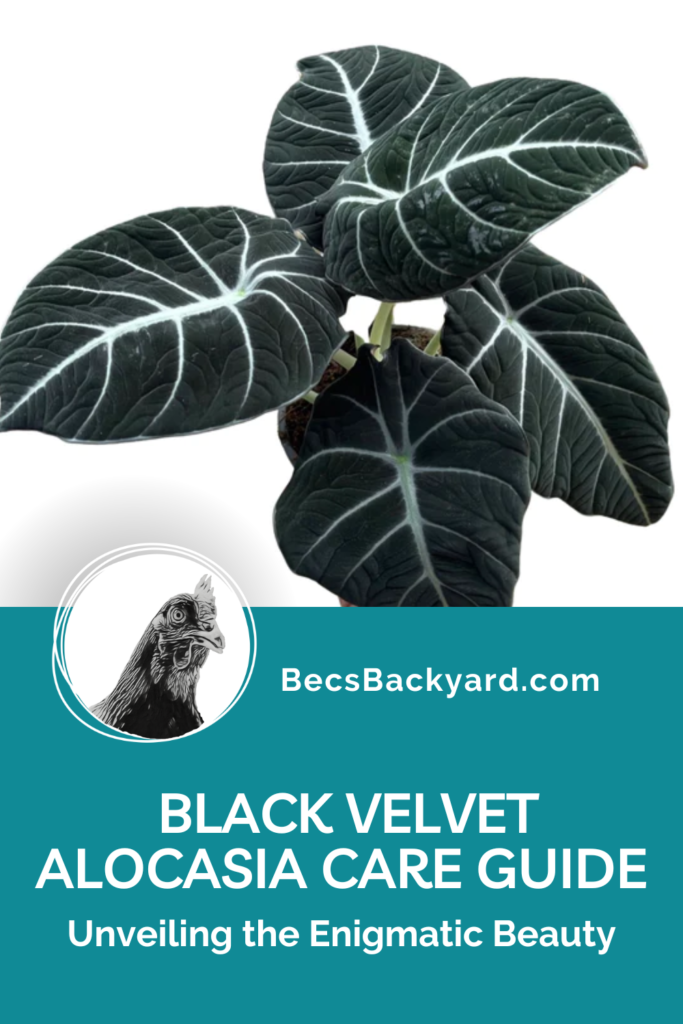
Plant Care
Light
Black Velvet Alocasia thrives in bright, indirect light. Place your plant near a window that receives filtered sunlight or in a well-lit room. Avoid exposing it to direct sunlight, as this can scorch the leaves. Adequate light is crucial for the plant’s growth and to maintain its dark, velvety appearance.
Soil
Provide your Black Velvet Alocasia with well-draining soil that retains some moisture. A mixture of peat moss, perlite, and regular potting soil works well. This combination allows excess water to drain freely, preventing the plant from sitting in soggy soil.
Water
Water your Black Velvet Alocasia thoroughly when the top inch of soil feels dry to the touch. Ensure that the water reaches the root zone and allow any excess to drain away. Avoid overwatering, as it can lead to root rot. Mist the leaves occasionally to enhance humidity levels and maintain their velvety texture.
Temperature and Humidity
Black Velvet Alocasia thrives in warm and humid conditions. Aim for temperatures between 65-80°F (18-27°C) during the day and slightly cooler temperatures at night. Maintain a humidity level of around 60-70% by placing the plant on a humidity tray or using a room humidifier. Regularly misting the leaves also helps to increase humidity.
Fertilizers
Feed your Black Velvet Alocasia with a balanced, water-soluble fertilizer during the growing season (spring and summer). Dilute the fertilizer to half the recommended strength and apply it every four to six weeks. Avoid fertilizing during the winter months when the plant is in a dormant phase.
Propagating Black Velvet Alocasia
Propagating Black Velvet Alocasia can be done through division. When the plant has outgrown its pot, carefully remove it from the container and separate the rhizomes, ensuring each division has at least one healthy stem and a portion of the root system. Plant the divisions in separate pots with well-draining soil and provide them with the same care as mature plants.
Potting and Repotting Black Velvet Alocasia
When repotting Black Velvet Alocasia, choose a pot that is one size larger to accommodate the growing plant. Ensure the pot has drainage holes to prevent waterlogging. Gently loosen the roots and place the plant in the new pot, adding fresh soil around it. Repotting is usually done in spring when the plant shows signs of being root-bound.
Common Pests
Spider Mites
These tiny arachnids can infest your plant, causing webbing, yellowing leaves, and stunted growth. Spider mites thrive in dry conditions, so increasing humidity and regularly misting the leaves can help deter them. Treat infestations with insecticidal soap or neem oil.
Aphids
Aphids are small, soft-bodied insects that can cluster on the undersides of leaves, sucking sap and causing leaf distortion. They can be green, black, or brown in color. Remove aphids by gently washing the plant with a mild soap and water solution or use insecticidal soap. Ladybugs and beneficial insects can also help control aphid populations.
Mealybugs
These white, cotton-like pests tend to congregate in leaf axils, undersides, and other protected areas of the plant. Mealybugs feed on sap, leading to weak growth and honeydew secretion. Remove mealybugs by wiping them off with a cotton swab dipped in rubbing alcohol or use insecticidal soap. Repeat treatments may be necessary.
Scale Insects
Scale insects appear as small, round or oval-shaped bumps on the stems and leaves of plants. They can be brown, black, or tan in color. Scale insects feed on plant sap, causing yellowing leaves and stunted growth. Use a cotton swab dipped in rubbing alcohol to remove individual scales, or use insecticidal soap for larger infestations.
Fungus Gnats
These small, flying insects are attracted to moist soil and can lay their eggs in the potting mix. The larvae feed on organic matter and plant roots, potentially causing damage. Allow the soil to dry out slightly between waterings to discourage fungus gnat infestations. Sticky traps can help control adult gnats, and beneficial nematodes can target the larvae.
Regularly inspect your Black Velvet Alocasia for signs of pest infestations and take prompt action to prevent the pests from spreading or causing damage to the plant.
Common Problems with Black Velvet Alocasia
While Black Velvet Alocasia is a resilient plant, it can face a few challenges.
Yellowing Leaves
Yellow leaves can indicate various issues, such as overwatering, underwatering, or nutrient deficiencies. Ensure that you are providing appropriate watering by allowing the top inch of soil to dry before watering again. Adjust your watering schedule accordingly. If nutrient deficiencies are suspected, consider using a balanced fertilizer formulated for houseplants.
Leaf Browning
Browning of the leaves can occur due to low humidity or excessive direct sunlight. Black Velvet Alocasia thrives in high humidity levels, so misting the leaves regularly or using a humidifier can help increase moisture around the plant. Additionally, ensure that the plant is not exposed to intense, direct sunlight, which can scorch the leaves. Filtered or indirect light is best.
Pest Infestations
Pests such as spider mites, aphids, mealybugs, and scale insects can attack Black Velvet Alocasia. Regularly inspect your plant for signs of infestation, such as webbing, sticky residue, or visible insects. Treat the pests using appropriate methods, such as insecticidal soap, neem oil, or manual removal. Isolating the affected plant and maintaining good plant hygiene can help prevent pest infestations.
Root Rot
Overwatering or poorly draining soil can lead to root rot, a condition where the roots become waterlogged and begin to decay. Symptoms include wilting, yellowing leaves, and a foul odor from the soil. To prevent root rot, ensure that the pot has drainage holes, and use a well-draining soil mix. Water the plant only when the top inch of soil feels dry, and avoid leaving the plant sitting in standing water.
Fungal Infections
Black Velvet Alocasia can be susceptible to fungal infections, such as leaf spot or powdery mildew. These infections often occur in humid environments or when there is poor air circulation around the plant. To prevent fungal issues, avoid overhead watering, ensure good air circulation, and maintain proper humidity levels. If fungal infections occur, treat them with appropriate fungicides or remove affected leaves.
Regularly monitor your Black Velvet Alocasia for any signs of problems and take appropriate action promptly. Adjusting watering routines, improving humidity levels, providing proper light conditions, and addressing pest or disease issues can help keep your plant healthy and thriving.
FAQs
How often should I water my Black Velvet Alocasia?
Water your plant when the top inch of soil feels dry. It’s essential to maintain proper drainage to prevent overwatering.
Can I grow Black Velvet Alocasia outdoors?
While Black Velvet Alocasia can tolerate some outdoor conditions, it thrives best as an indoor plant, where you can control the light, temperature, and humidity.
How often should I fertilize my Black Velvet Alocasia?
During the growing season (spring and summer), fertilize every four to six weeks using a diluted, balanced fertilizer.
How can I increase humidity for my Black Velvet Alocasia?
Increase humidity by misting the leaves regularly, using a room humidifier, placing the plant on a humidity tray filled with water and pebbles, or grouping it with other plants.
Why are the leaves of my Black Velvet Alocasia turning yellow?
Yellowing leaves can indicate overwatering, underwatering, or nutrient deficiencies. Adjust your watering routine and consider fertilizing with a balanced fertilizer.
Conclusion
In conclusion, Black Velvet Alocasia is a mesmerizing plant that demands attention and care. By providing the right balance of light, soil, water, temperature, and humidity, you can maintain the health and beauty of this striking plant. Remember to address any common pests promptly and tackle problems such as yellowing leaves or leaf browning. With the knowledge gained from this care guide, you are equipped to nurture your Black Velvet Alocasia and enjoy its captivating presence in your indoor garden. Embrace the elegance of this botanical wonder and create a haven of velvet beauty in your home.


